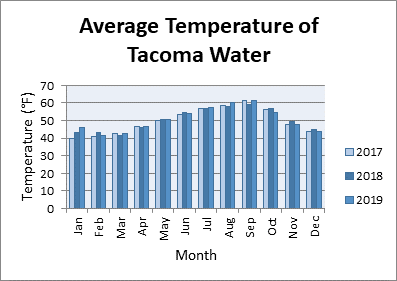Water System Restoration
Flushing your water system is important for homes and businesses that have been closed, or significantly reduced their water use.
Corrosion particulates in the plumbing can accumulate, and chlorine residuals normally in the water to provide disinfection may have dissipated, which can cause bacteriological growth. Flushing removes the particulates and refreshes the water in the pipes with clean, chlorinated water from our distribution system.
Here are some steps to take to prepare your home and business water pipes after periods of low flow or no-flow conditions.
- Business
-
Each building is different and will require different actions based on its plumbing systems, use patterns, and source of water supply. Pay particular attention to high-risk equipment such as heating and refrigeration systems, sinks, safety equipment, pools and hot tubs, water features, etc. For more information, refer to the resource links below for recommendations from recognized water industry professionals.
Prepare to flush water pipes:
- Remove and clean faucet aerators and showerheads. Leave off during flushing.
- Remove point of use filter cartridges, such as the filter in refrigerators, and consider replacing.
- Discard ice from ice makers and discard two to three additional batches.
Flush water pipes and internal plumbing:
-
- Begin with fixtures where the water first enters the business.
- Systematically flush from bottom to top of the building.
- Flush cold water lines first, then the hot water lines.
- Flush each fixture at a full flow rate for five minutes or until a noticeable change in water temperature occurs.
- Run dishwashers empty for two to three cycles.
Test water
-
- When testing yourself (chlorine, pH, temperature, conductivity), use test equipment with EPA approved methods. Many test kits sold at home improvement stores do not provide highly accurate results but do provide a general indicator.
- When testing professionally, ensure that you work with a State of Washington laboratory accredited for drinking water.
- Residential
-
It is always a good practice to flush your water pipes and faucets for 30 seconds after periods of low or no flow, such as while you are at work or overnight while you are sleeping. This flushing helps remove routine corrosion particles from the piping and freshens the water.
There are also other steps to take after an extended period of discontinued service (e.g., weeks or months.) A thorough flushing process is appropriate in such situations.
Prepare to flush water pipes:
-
- Remove and clean faucet aerators and showerheads. Leave off during flushing.
- Remove point of use filter cartridges, such as the filter in refrigerators, and consider replacing.
- Discard ice from ice makers and discard two to three additional batches.
Flush water pipes and internal plumbing:
-
- Begin with fixtures where the water first enters the home.
- Systematically flush from bottom to top of the house.
- Flush cold water lines first, then the hot water lines.
- Flush each fixture at a full flow rate for five minutes or until a noticeable change in water temperature occurs.
- Run dishwashers and clothes washers empty for two to three cycles.
Test your water
When testing yourself (chlorine, pH, temperature, conductivity), use test equipment with EPA approved methods. Many test kits sold at home improvement stores do not provide highly accurate results but do provide a general indicator.
-
- Normal Water Chemistry Parameters
-

- Average pH = 8.59 (expected range is 8.0 to 9.0)
- Average chlorine residual = 1.11 ppm (expected range is 0.7 to 1.2 ppm)
- ppm = parts per million
While temperature may change seasonally, chemistry values remain stable.
- Additional Resources
-
Helpful guidance from water industry professionals.
For water quality information, call 253-502-8207 or email WaterQuality@CityofTacoma.org.

